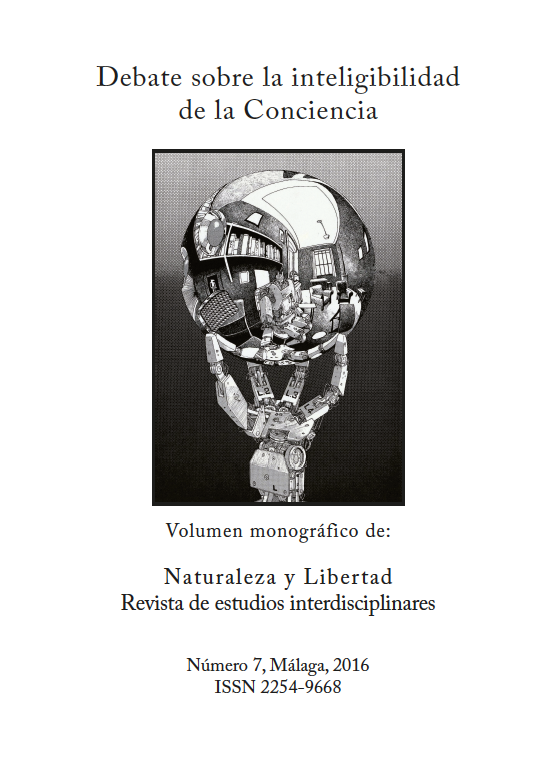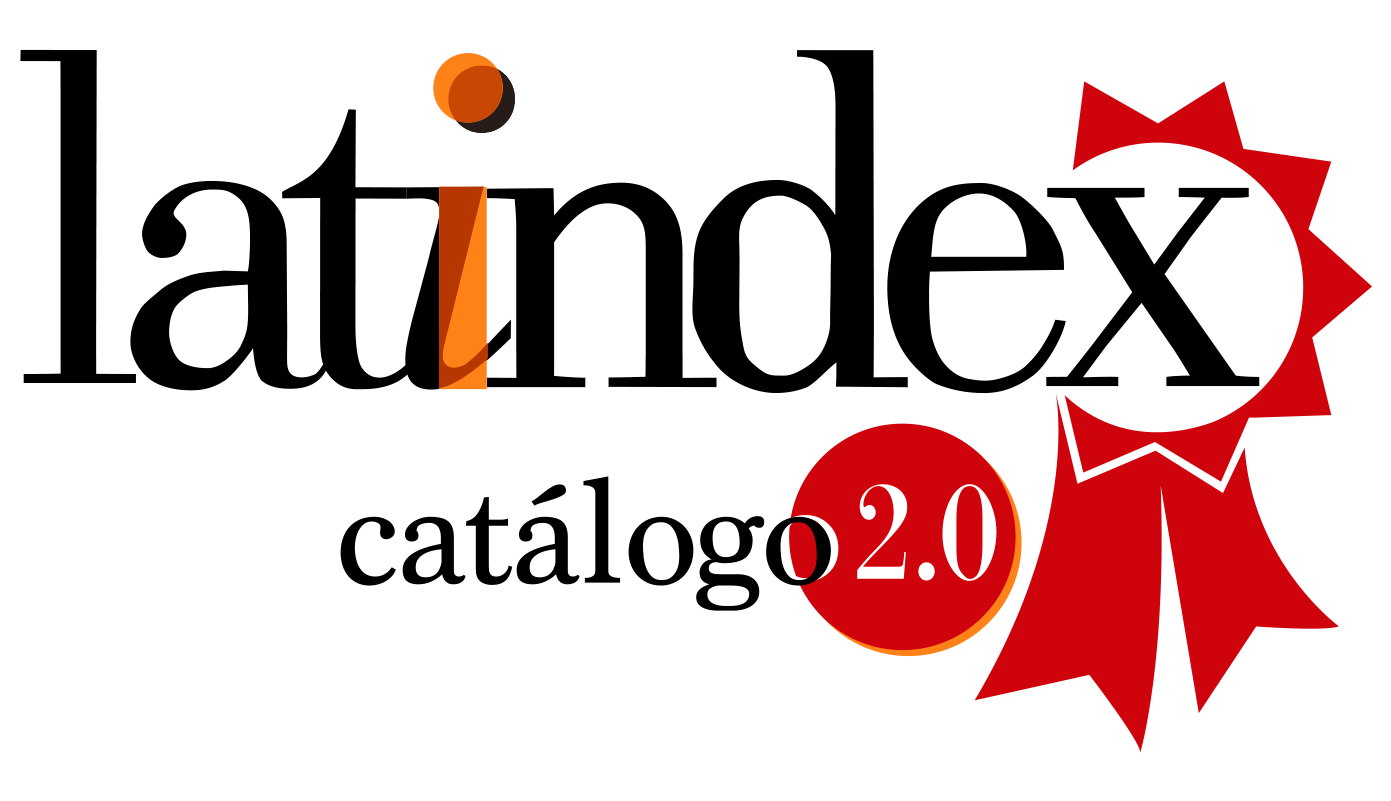La alteridad mal explicada: Una visión alternativa sobre el problema de las otras mentes
DOI:
https://doi.org/10.24310/NATyLIB.2016.v0i7.6354Keywords:
alteridad, conciencia, Juan Arana, ciencia cognitiva,Abstract
Tomando como punto de partida la tesis de Arana en La conciencia inexplicada (de que la conciencia es inexplicable por métodos naturalistas), la ponencia defiende una visión de la capacidad de alteridad en el ser humano como acoplamiento de dos componentes: la conciencia primordial e inexplicable que Arana analiza, y la capacidad estructural innata del ser humano para la mutualidad. La ponencia critica las explicaciones que la ciencia cognitiva ha dado a la cuestión de la alteridad, para posteriormente proponer una explicación alternativa, proporcionando evidencias empíricas y soporte teórico.Downloads
Metrics
References
M. Anisfeld, J. C. Masters, S. W. Jacobson, J. Kagan, A. N. Meltzoff, y M. K. Moore. “Interpreting ‘imitative’ responses in early infancy”. Science, vol. 205, núm. 4402, Julio 1979,
-219. doi:10.1126/science.451593
J. Arana, La conciencia inexplicada. Ensayo sobre los límites de la comprensión naturalista de la mente, Madrid, Biblioteca Nueva, 2015.
F. Cummins, “Social cognition is not a special case, and the dark matter is more extensive than recognized”, Behavioral and Brain Sciences, vol. 36, núm. 4, 2013: 415–416. doi:10.1017/S0140525X12001859
G. di Pellegrino, L. Fadiga, L. Fogassi, V. Gallese, y G. Rizzolatti, “Understanding motor events: A neurophysiological study”, Experimental Brain Research, vol. 91, 1992: 176–180.
I. Dinstein, C. Thomas, M. Behrmann, y D. J. Heeger, “A mirror up to nature”, Current Biology, vol. 18, núm. 1: 13–18, 2008. doi:10.1016/j.cub.2007.11.004
V. Gallese, L. Fadiga, L. Fogassi, y G. Rizzolatti, “Action recognition in the premotor cortex”, Brain, vol. 119, núm. 2: 593–609, 1996. doi:10.1093/brain/119.2.593.
V. Gallese, C. Keysers, y G. Rizzolatti, “A unifying view of the basis of social cognition”, Trends in Cognitive Sciences, vol. 8, núm. 9: 396-403, 2004. doi:10.1016/j.tics.2004.07.002
V. Gazzola, y C. Keysers, “The observation and execution of actions share motor and somatosensory voxels in all tested subjects: single-subject analyses of unsmoothed fMRI data”,
Cerebral Cortex, vol. 19: 1239–1255, 2009.
A. Gopnik, y A. N. Meltzoff, “Minds, bodies and persons: Young children’s understanding of the self and others as reflected in imitation and “theory of mind” research”. En S. Parker & R. Mitchell (Eds.), Self-awareness in animals and humans, New York, NY:
Cambridge University Press, 1994: 166-186.
G. Hickok, The myth of mirror neurons: The real neuroscience of communication and cognition, New York, W. W. Norton & Company, 2014.
A. Hyslop, “Other Minds”. En E. N. Zalta (Ed.) The Stanford encyclopedia of philosophy (Spring 2016 Ed.), 2016, Disponible en http://plato.stanford.edu/archives/spr2016/entries/other-minds/
A. Hyslop, y F. C. Jackson. “The Analogical Inference to Other Minds”, American Philosophical Quarterly, vol. 9, 1972: 168–176.
N. Malcolm, “Knowledge of Other Minds”. En V.C. Chappell (Ed.) The Philosophy of Mind, Englewood Cliffs, PrenticeHall, 1962.
A. N. Meltzoff, y M. K. Moore, “Imitation of Facial and Manual Gestures by Human Neonates”, Science, vol. 198, núm. 4312, 1977: 75-78.
A. N. Meltzoff, y M. K. Moore, “‘Infants’ understanding of people and things: From body imitation to folk psychology”. En J.L. Bermúdez, A. Marcel y N. Eilan (Eds.), The body
and the self: 43–69, Cambridge, MIT Press, 1995.
K. Moore, “Second-person neuroscience: Implications for Wittgensteinian and Vygotskyan approaches to psychology”, Behavioral and Brain Sciences, vol. 36, núm. 4: 431–432, 2013. doi:10.1017/S0140525X12002129
P. B. Pascolo, R. Ragogna, y R. Rossi, “The mirror-neuron system paradigm and its consistency”, Gait & Posture, vol. 30, núm. 1: 65, 2009. doi:10.1016/j.gaitpost.2009.07.064
I. Ratie, “Otherness in the Pratyabhijñ? philosophy”, Journal of Indian Philosophy, vol. 35: 313-370, 2007. doi:10.1007/s10781-007-9017-5
G. Ryle, The Concept of Mind, Londres, UK: Hutchinson's University Library, 1949.
N. Sameen, J. Thompson, y J. I. Carpendale, “Further steps toward a second-person neuroscience”, Behavioral and Brain Sciences, vol. 36, núm. 4: 437–437, 2013. doi:10.1017/S0140525X1200204X
L. Schilbach, B. Timmermans, V. Reddy, A. Costall, G. Bente, T. Schlicht, y K. Vogeley, “Toward a second-person neuroscience”, Behavioral and Brain Sciences, vol. 36, núm. 4, 2013: 393–462. doi:10.1017/S0140525X12000660
J. R. Searle, “Collective intentions and actions”. En P. Cohen, J. Morgan, y M. E. Pollack (Eds.), Intentions in communication, Cambridge, MIT Press, 1990: 401-416.
L. S. Vygotsky, Thought and Language. Cambridge, MIT Press, 1962.
L. S. Vygotsky, Mind in society: The development of higher psychological processes, Cambridge, Harvard University Press, 1978.
D. Zahavi, “Husserl’s Intersubjective Transformation of Transcendental Philosophy”, Journal of the British Society for Phenomenology, vol. 27, núm. 3, 1996: 228–245.
D. Zahavi, Self and Other: Exploring Subjectivity, Empathy, and Shame. Oxford, UK: Orxford University Press, 2014.
Downloads
Published
How to Cite
Issue
Section
License
Those authors who have publications with this journal, accept the following terms:
1. Copyright and licensing information are clearly described on the journal’s web site: all content published in Naturaleza y Libertad is open acces without limit, and are subject to the Attribution-NonCommercial-ShareAlike 4.0 International (CC BY-NC-SA 4.0) license. The full text of which can be consulted at https://creativecommons.org/licenses/by-nc-sa/4.0/
2. It is the responsibility of the authors to obtain the necessary permissions for the images that are subject to copyright. The authors whose contributions are accepted for publication in this journal will retain the non-exclusive right to use their contributions for academic, research and educational purposes, including self-archiving or deposit in open access repositories of any kind. The electronic edition of this magazine is edited by the Editorial de la University of Malaga (UmaEditorial), being necessary to cite the origin in any partial or total reproduction.
3. This journal allows and encourages authors to publish papers on their personal websites or in institutional repositories, both before and after their publication in this journal, as long as they provide bibliographic information that accredits, if applicable, your posting on it.
4. In no case will anonymous papers be published.





18.png)













